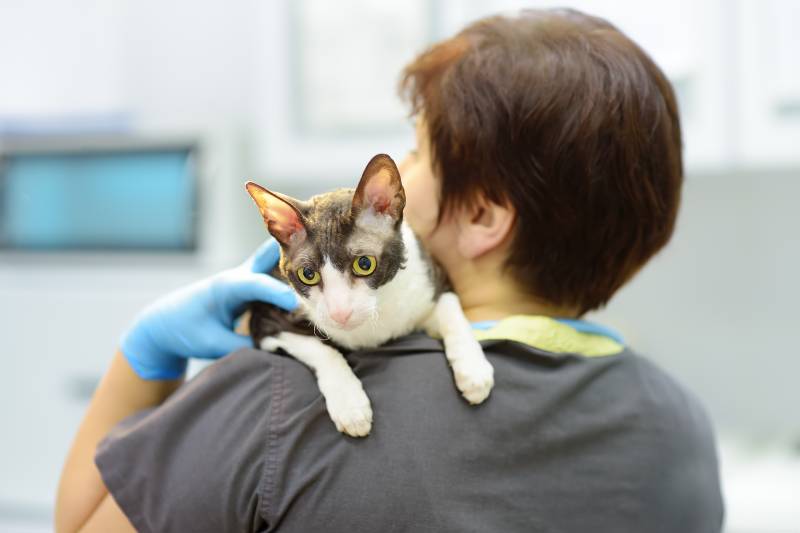What is a Normal Respiratory Rate For Cats? Vet-Reviewed Facts & FAQ
Updated on
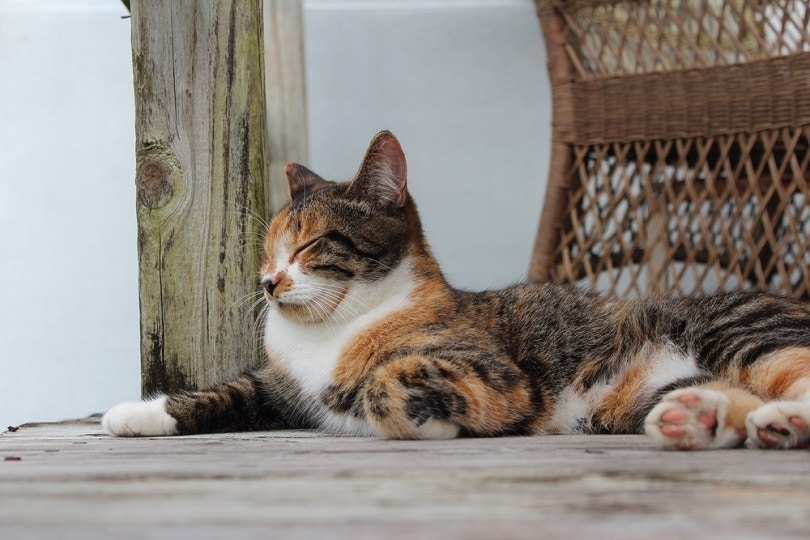
Click to Skip Ahead
Understanding your cat’s vital signs is one of the best ways to monitor your cat’s overall health. The easiest vital sign to spot is the respiratory rate, which is how quickly your cat is breathing per minute. A few factors can impact the respiratory rate, giving you insight into your cat’s health.
To better understand what your cat’s respiratory rate means, you first need to understand what’s normal. This article goes over what you need to know about your cat’s respiratory rate.
What Is a Normal Respiratory Rate for a Cat?
In a normal cat with no diseases impacting the respiratory system, the breathing rate should be between 15–30 breaths per minute. You can count this rate by watching your cat’s chest rise and fall as they breathe. If attempting to count your cat’s respiratory rate, it’s best to leave your cat alone while you do so. If you are talking to, petting, or bothering your cat, it can impact the respiratory rate. It can also cause your cat to move around or begin purring, both of which can make seeing full chest rise difficult.
This breathing rate is for a cat that is at rest or relaxed. If your cat just ran around the house, it’s normal for the breathing rate to be slightly elevated. If your cat is asleep and has a respiratory rate of 50, that is a major concern. If you’re worried about your cat’s respiratory rate, it’s a good idea to measure the rate several times to ensure you’re getting an accurate number.
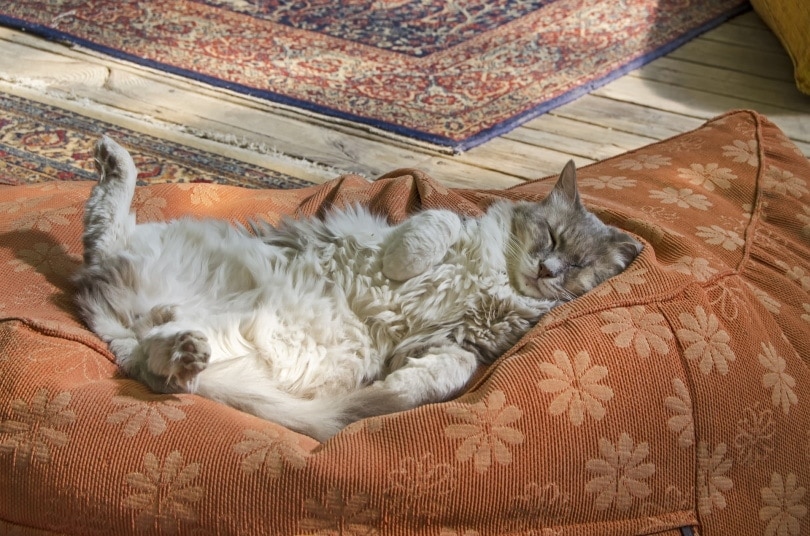
What Does a Decreased Respiratory Rate Mean?
There are several possible causes for a decreased respiratory rate in a cat. If your cat’s breathing seems slow and struggling to take in breaths, this is a medical emergency. This symptom could be caused by toxin ingestion, organ failure, a neurological problem, or impending death.
If your cat’s respiratory rate seems slightly lower when at rest, it may not be an emergency, but it is worth mentioning to your vet. For example, if your sleeping cat has a respiratory rate of 12 but shows no respiratory distress and doesn’t have a decreased respiratory rate while awake, it may be normal for your cat, but also there may be an underlying health condition that needs to be evaluated by a vet. When in doubt, contact the vet about concerns to determine if your cat needs to be seen emergently or not.
What Does an Elevated Respiratory Rate Mean?
Like a decreased respiratory rate, there are multiple things that can cause an elevated respiratory rate. Heart disease and failure, acute respiratory distress syndrome (ARDS), organ failure, infections, anemia, and certain toxins can all cause an increased respiratory rate in cats. An increased respiratory rate indicates that your struggles to perfuse or move blood and oxygen throughout the body. This can quickly become an emergency.
If your cat is at rest and has an elevated respiratory rate, a call or visit to the vet is definitively necessary. If the elevated rate is accompanied by respiratory distress symptoms, like shallow breaths, blue gums, and anxiety, then an urgent vet visit is necessary. A cat that has been active may have a slightly elevated respiratory rate, just like you would after intense exercise, that is normal. Like with a decreased respiratory rate, an elevated respiratory rate is an excellent reason to contact your vet to ensure there is no serious problem with your cat.
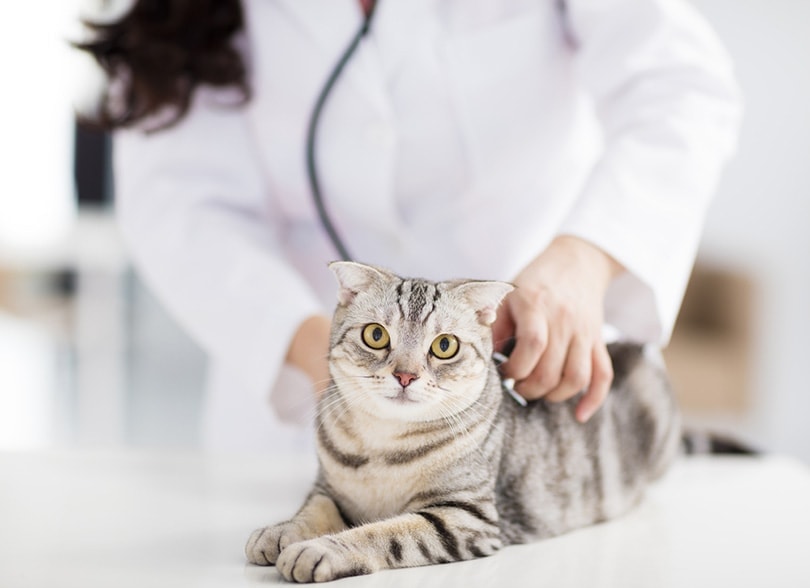
Signs of Respiratory Distress
An abnormal respiratory rate can be highly concerning. But how do you know if your cat is truly experiencing this dangerous condition?
- Fast respiration rate
- Difficulty breathing
- Chest visibly moving during breathing
- Audible breathing
- Fatigue
- Lethargy
- Coughing
- Panting (or open mouth breathing)
- Nostrils flaring
- Blue-colored gums (from lack of oxygen)
Causes of Fast Respiratory Rate
Unfortunately, a fast respiratory rate can be caused by a wide number of factors. Some of these are relatively easy to fix, such as being hot or over-exerted. In these situations, offering your cat water or a cool, well-ventilated place in the shade or removing them from a stressful situation might be enough. That said, a heat stroke is a medical emergency, so if your cat does not quickly recover, you should take them to the vet. Other complicated conditions, such as shock, pleural effusion, or exposure to dangerous toxins, are also medical emergencies.
It is important to examine your environment to try to figure out which of these causes are more plausible than others. For example, if it is a hot summer day and your cat just came inside, they are likely hot. However, if your cat recently ate something they should not have or they are experiencing pain or lethargy, it might be something more serious.
- Emotional distress
- Respiratory infection
- Pain
- Heat
- Exertion
- Anemia
- Heart disease (including heart failure)
- Shock
- Allergies
- Low oxygen levels
- Heartworms (not as common in cats as in dogs)
- Asthma
- Pulmonary edema (fluid in lungs)
- A foreign object (partial obstruction) in the respiratory tract
- Trauma
- Toxins
- Pleural effusion (buildup of fluid in the chest cavity)
What to Do If a Cat Has a Fast Respiratory Rate?
If your cat is experiencing an elevated respiratory rate, you don’t need to panic right away. That said, examine the scenario and make a fast decision. Since oxygenation is vital for survival, many causes of a fast respiratory rate are medical emergencies. If your cat is experiencing a higher-than-normal respiratory rate multiple times per day, this is a clinical sign of heart problems or other issues, and it needs to be checked by a veterinarian.
If your cat is noticeably struggling to breathe or presents other signs, they are in respiratory distress, and you should take them to the veterinarian immediately. Your vet will be able to offer oxygen and any needed support therapy to try to stabilize your cat while they do a complete physical examination and auscultation. They will collect samples, run any needed diagnostic tests, and look for possible reasons behind your cat’s fast respiratory rate. Based on the diagnosis, they will then recommend the best treatment option for your cat.
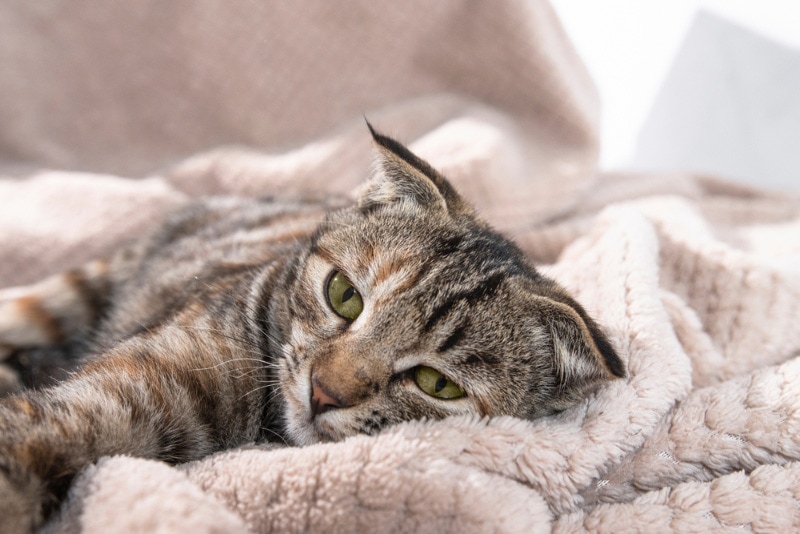
What to Do If a Cat Has a Fast Heart Rate?
High respiratory rates and high heart rates often go hand in hand. When a cat is breathing heavily and their heart is racing, the body is often trying to circulate more oxygen. If you suspect that your cat has a fast heart rate in conjunction with an elevated respiratory response, you should take them to the veterinarian as soon as possible.
 Final Thoughts
Final Thoughts
When it comes to respiratory issues, it’s better to be safe than sorry and contact or visit the vet immediately. Respiratory conditions can rapidly go downhill, leading to a painful death for your cat. There are dozens of causes of an altered respiratory rate in a cat, from disease to poisoning. You want to know if there’s a chance your cat may have gotten into some sort of household chemical or medication. This will help your vet know how best to treat your cat.
With an understanding of a normal respiratory rate for a cat, you can better monitor your cat’s health and pick up on small changes early, potentially saving your cat’s life. Get into the habit of routinely checking your cat’s respiratory rate, you will be able to better notice when something has changed by knowing what’s normal for your cat.
Featured Image Credit: TheLazyPineapple, Shutterstock



